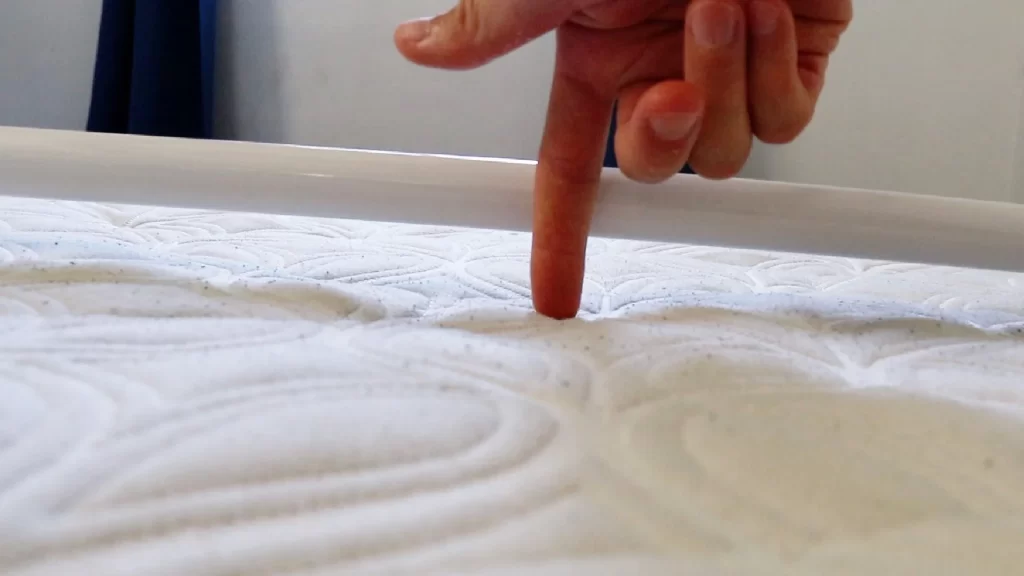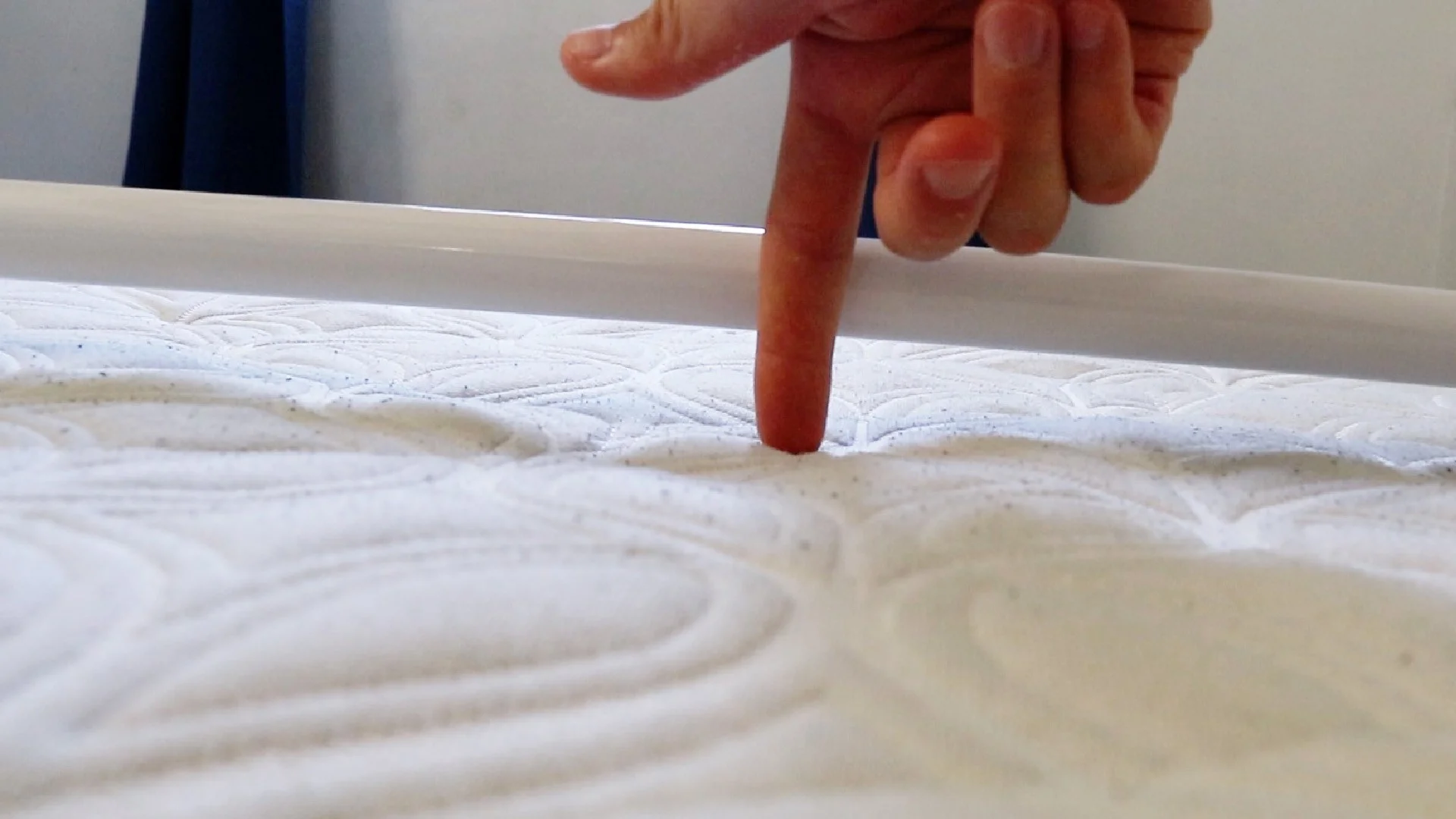Table

Picture this: You’re ready to slide into your cozy bed after a long day. But the moment you lay down, you feel an uncomfortable dip in the middle of the mattress. Your backache in the morning now makes sense — you’ve got a mattress indentation problem!
This scenario is all too common. You’re not alone if you’re grappling with the issue of mattress indentation. It’s a situation that can turn your precious sleep time into a nightly ordeal. But don’t despair. With the right information and a little elbow grease, you can solve this problem. In this article, we’ll guide you through five simple steps to fix mattress indentation, ensuring you reclaim your peaceful sleep.
What is Mattress Indentation?
Before diving into the solutions, it’s important to understand the enemy we’re dealing with. Mattress indentation, often referred to as sagging, happens when a part of your mattress depresses under weight over time. It’s a common issue with various types of mattresses, especially older ones.
Dr. Keith Cushner, a sleep expert and founder of Tuck Sleep Foundation, explains, “Mattress indentations can significantly affect your sleep quality, leading to discomfort and pain. They are also a sign of your mattress’s declining health.”
Step 1: Assess the Situation
Your first step is to figure out the extent of the indentation. Remove all bedding and scrutinize your mattress. Use a straight edge like a ruler or a broomstick to measure the depth of the sag. If the indentation is over 1.5 inches, it’s substantial enough to affect your sleep quality.
Step 2: Rotate or Flip Your Mattress
Sometimes, the simplest solution can work wonders. If your mattress is double-sided, flipping it over might solve the indentation issue. Even if it’s one-sided, rotating it 180 degrees can distribute wear more evenly, reducing sagging. As a good rule of thumb, rotate or flip your mattress every 3-6 months.
Step 3: Use a Mattress Topper
A mattress topper can be an effective temporary fix for mattress indentations. Mattress toppers can fill the indentation, providing a flat surface. Choose a topper that matches the size of your mattress and is made from high-density memory foam for best results.
Step 4: Support it with a Mattress Helper
A mattress helper is designed to support your mattress from beneath, thus fixing the sagging. Depending on your bed structure, you can place a mattress helper between your mattress and box spring or mattress and bed frame.
Step 5: DIY Fixes
When commercial solutions or simple fixes don’t seem to work, it’s time to roll up your sleeves and try some do-it-yourself methods. While they may not offer a permanent solution, DIY fixes can save time and significantly improve your sleep quality.
Fill it Up: Using Pillows or Towels.
One common DIY solution to deal with mattress indentation involves using household items like pillows or towels. The concept is straightforward: fill in the sagging areas with something firm yet comfortable enough to sleep on.
If you’re using towels, start by rolling them up tightly. Ensure they are compact and firm enough to offer good support. Then, place these rolled-up towels in the areas where your mattress is sagging.
For pillows, it’s a similar approach. Use firm, robust pillows and stuff them in the indentation. Depending on the depth and size of the indentation, you might need more than one pillow.
When doing this, keep in mind that this is a temporary fix. The added materials may not provide uniform support and can lead to an uneven sleeping surface. However, if done right, it can significantly reduce the effects of the sag.
Lend a Solid Hand: Using Plywood
Another popular DIY method involves the use of plywood. The idea here is to provide a solid, uniform surface beneath your mattress, thus countering the sagging effect.
To do this, measure your bed frame or box spring dimensions. Then, purchase a piece of plywood matching those dimensions. The thickness of the plywood will depend on the level of support needed but generally, a 3/4 inch thickness is sufficient.
Slide the plywood between your mattress and your bed frame or box spring. This should offer extra support and help level out any indentations.
One thing to note when using plywood is that while it can indeed offer additional support, it might also make your mattress feel firmer. This solution is recommended for inherently soft mattresses or those who prefer a firm sleeping surface.
The Inflatable Fix: Using an Air Mattress
This might sound counterintuitive, but an air mattress can help you handle sagging. Inflate the air mattress and place it in the sagging area. The air mattress, when inflated to the right level, can provide firm support and even out the surface of your bed.
However, this option is better suited for larger indentations and may be uncomfortable for small sagging areas. Plus, there is always the risk of the air mattress deflating over time, so it’s not a long-term solution.
While these DIY fixes can provide temporary relief, it’s essential to understand they are not permanent solutions. If your mattress indentation is severe and these methods do not provide enough relief, it might be time to consider replacing it. Remember, good sleep is integral to your health and well-being and worth investing in.
If all else fails, consider some DIY solutions. Stuffing the indentation area with firm pillows or rolled-up towels can offer short-term relief. Alternatively, you could place a piece of plywood under the mattress for extra support, though comfort might be compromised.
When is it Time to Get a New Mattress?
Despite all efforts, there comes a time when your mattress may be beyond saving. If your mattress is over 8-10 years old and the sagging worsens, it might be time for a replacement. While this could be a significant investment, remember that a good mattress is vital for a good night’s sleep and overall health.
Conclusion
Fixing mattress indentation may not be a one-size-fits-all solution. It might require a bit of trial and error. Yet, armed with these five steps, you’re ready to tackle this problem head-on.
Remember that mattress maintenance is key. Regularly rotating or flipping your mattress can help avoid
Mattress Buzz is reader supported. When you buy a product through our links we may earn an affiliate commission.

